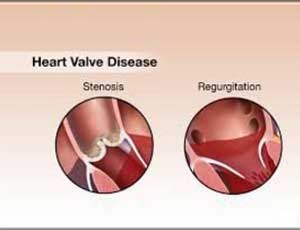- Home
- Editorial
- News
- Practice Guidelines
- Anesthesiology Guidelines
- Cancer Guidelines
- Cardiac Sciences Guidelines
- Critical Care Guidelines
- Dentistry Guidelines
- Dermatology Guidelines
- Diabetes and Endo Guidelines
- Diagnostics Guidelines
- ENT Guidelines
- Featured Practice Guidelines
- Gastroenterology Guidelines
- Geriatrics Guidelines
- Medicine Guidelines
- Nephrology Guidelines
- Neurosciences Guidelines
- Obs and Gynae Guidelines
- Ophthalmology Guidelines
- Orthopaedics Guidelines
- Paediatrics Guidelines
- Psychiatry Guidelines
- Pulmonology Guidelines
- Radiology Guidelines
- Surgery Guidelines
- Urology Guidelines
Lowering BP cuts down risk of Valvular Heart Disease: JAMA

New Delhi: High Blood Pressure (BP) is associated with a plethora of cardiovascular diseases. A new study has found that lifetime exposure to elevated systolic blood pressure may be associated with an increased risk of major valvular heart disease, suggesting that blood pressure lowering might be a useful strategy for prevention of this condition. The study appeared in the high impact journals JAMA.
Risk factors for valvular heart disease remain largely unknown, which limits prevention and treatment. In the past century, a substantial change in the spectrum of valvular heart disease (VHD) has occurred. Age-related valve degeneration replaced rheumatic valvular disease as the predominant cause of valve dysfunction in high-income countries, and it typically presents as aortic stenosis or mitral regurgitation.
The study was designed to assess the association between systolic blood pressure (BP) and major valvular heart disease.
A UK Biobank population-based cohort of 502 602 men and women aged 40 to 96 years at baseline were evaluated through Mendelian randomization using individual participant data. Inclusion criteria were valid genetic data and BP measurements. The participants were recruited between 2006 and 2010; data analysis was performed from June 2018 to January 2019.
Systolic BP was measured during clinical assessment and instruments for the genetic effect of high BP were identified from variants that were independently (linkage disequilibrium threshold of r2<0.1) associated with systolic BP with minor allele frequency greater than 0.01. A total of 130 single-nucleotide polymorphisms that havqe been shown to be associated with systolic BP in a genome-wide association meta-analysis involving 1 million participants of European ancestry were selected.
Main Outcomes and Measures: Incident aortic stenosis, aortic regurgitation, and mitral regurgitation, individually and combined. Cases were largely based on hospital records linked to the UK Biobank with International Classification of Diseases and Health Related Problems, Tenth Revision codes.
Key findings
- Of the 502 602 individuals screened, 329 237 participants had valid genetic data and BP measurements; of this cohort
- 3570 individuals had a diagnosis of valvular heart disease
- Aortic regurgitation, and mitral regurgitation, 1736.
- Each genetically associated 20–mm Hg increment in systolic BP was associated with an increased risk of aortic stenosis, 3.26; 95% CI, 1.50-7.10), aortic regurgitation, and mitral regurgitation, with no evidence for heterogeneity by type of valvular heart disease.
- Sensitivity analyses confirmed the robustness of the association.
To conclude the study the authors wrote; " Lifetime exposure to elevated systolic BP appears to be associated with an increased risk of major valvular heart disease."
For further reference, click on the link
doi:10.1001/jamacardio.2019.2202

Disclaimer: This site is primarily intended for healthcare professionals. Any content/information on this website does not replace the advice of medical and/or health professionals and should not be construed as medical/diagnostic advice/endorsement or prescription. Use of this site is subject to our terms of use, privacy policy, advertisement policy. © 2020 Minerva Medical Treatment Pvt Ltd